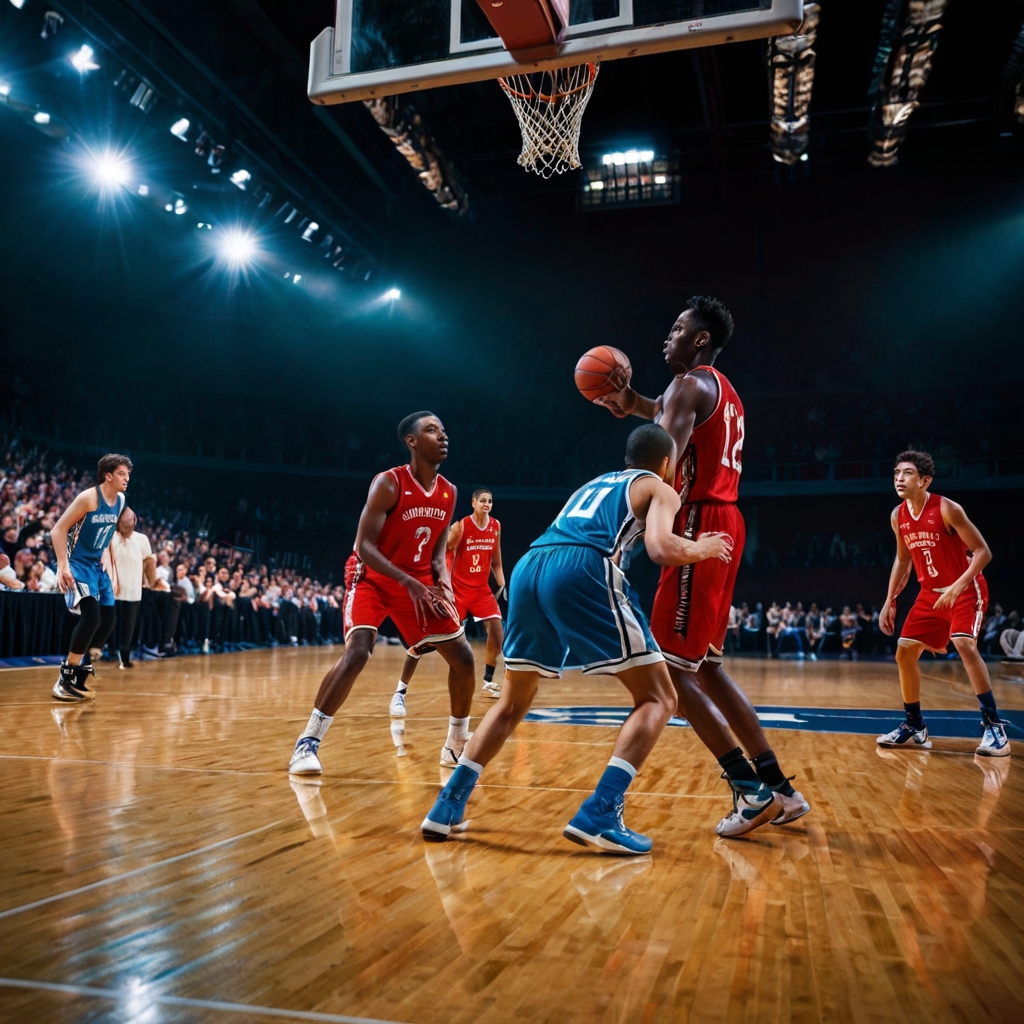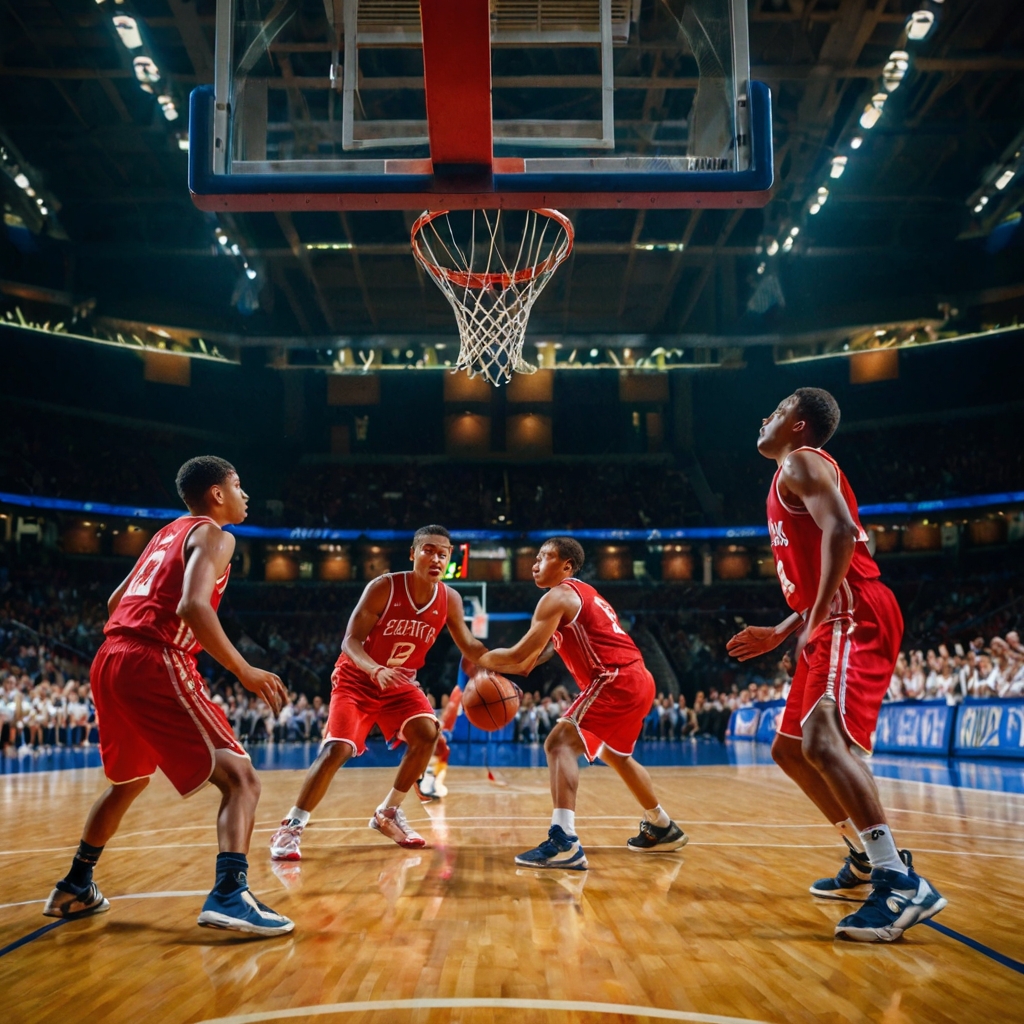Top 3 Fundamental Rules in Basketball: A Guide for Beginners

Basketball is one of the most dynamic and fast-paced sports in the world, attracting millions of fans and players alike. While it may seem simple at first glance, understanding the core rules is essential to truly appreciate the game. In this article, we’ll break down the three main rules in basketball, offering insights into how the game is played and what makes it such an exciting sport to watch and play.
1. Dribbling: The Art of Ball Control
Dribbling is arguably the most fundamental rule in basketball, as it governs how players move with the ball on the court. Players must continuously bounce the ball with one hand while moving. Here’s why dribbling is so crucial:
- No Traveling: A player cannot take more than two steps without dribbling. If they do, it’s considered “traveling,” resulting in a turnover.
- Double Dribble Violation: If a player stops dribbling and then starts again, it’s called a double dribble. Once you stop, you either have to pass or shoot the ball.
- Speed and Control: Mastering dribbling allows players to control the pace of the game, make sharp turns, and evade defenders.
2. Shooting: Scoring Points to Win
The main goal of basketball is to score points by getting the ball through the hoop. While shooting might seem straightforward, there are specific rules governing how and where players can score:
- Field Goals: A field goal refers to any basket made during regular play. Shots made from inside the three-point line are worth two points, while those from beyond it are worth three.
- Free Throws: Free throws are worth one point and are awarded after a foul. Players must shoot from a designated line, and no one is allowed to enter the key (the area around the basket) until the ball touches the rim.
- Shot Clock: Teams are required to attempt a shot within 24 seconds of gaining possession of the ball (NBA standard). Failing to do so results in a shot clock violation and the opposing team takes possession.
3. Defense and Fouling: Staying Competitive Without Breaking the Rules
Defense is just as important as offense in basketball, and while aggressive defense is encouraged, there are rules to ensure fairness and safety. Here are the main defensive rules related to fouls:
- Personal Fouls: These occur when a defender makes illegal contact with an offensive player, such as pushing, holding, or blocking their movement. A player is disqualified after committing five personal fouls in a game (six in the NBA).
- Shooting Fouls: When a defensive player fouls an offensive player during a shooting attempt, the shooter is awarded free throws. If the shot is made despite the foul, they receive one additional free throw.
- Technical Fouls: These are non-contact fouls related to unsportsmanlike conduct, such as arguing with referees, excessive complaining, or inappropriate behavior. They result in free throws for the opposing team.
Breaking Down Each Rule
1. Dribbling: Key to Movement
Without proper dribbling, basketball would lose its fast-paced excitement. Dribbling allows players to move around the court while maintaining control of the ball. Learning how to dribble effectively is one of the first skills new players need to master. It’s important to note that dribbling violations, such as traveling and double dribbling, lead to turnovers, which can quickly shift the momentum of the game.
2. Shooting: The Heart of the Game
Shooting is what makes basketball thrilling to watch, as every basket brings a team closer to victory. Field goals and free throws are the primary methods of scoring, but shot selection, accuracy, and timing are critical. The introduction of the three-point line added a new layer of strategy to the game, as players must decide whether to take a closer two-point shot or risk a long-distance three-pointer.
3. Defense and Fouling: Keeping It Fair
Basketball encourages competitive defense, but it must be done within the rules. Fouls are designed to prevent dangerous or unfair play, and they add an element of strategy. For instance, a team might commit a foul to stop an easy basket, but they risk giving away free throws. Balancing aggressive defense with clean play is an essential skill for any team.
Advanced Basketball Rules: Beyond the Basics
While the three rules mentioned above are the foundation of basketball, more advanced rules govern other aspects of the game:
- Goaltending: This occurs when a defender interferes with the ball on its way to the basket. If the ball is descending towards the hoop and a player blocks it, the shot is counted as a goal.
- Three-Second Rule: Offensive players can’t stay in the painted area (the key) for more than three seconds at a time. This rule prevents players from camping near the basket and encourages movement on offense.
- Backcourt Violation: After bringing the ball into the offensive half of the court, a team cannot pass or dribble the ball back into the defensive half. Doing so results in a turnover.
How These Rules Shape the Game
Understanding these core rules is vital because they influence how basketball is played at every level, from pick-up games to professional leagues like the NBA. For example, knowing the limits on dribbling and traveling affects how players move around the court. The shot clock adds urgency to each possession, forcing teams to think quickly and plan their moves in advance.
Why Mastering the Basics is Important
For beginners, mastering these three rules is the key to developing a strong foundation in basketball. Once these skills are learned, players can focus on more advanced strategies like setting screens, running plays, or implementing defensive traps.
1. Practice Makes Perfect
New players should spend time practicing each aspect of these rules. Dribbling drills, shooting exercises, and defensive training can help players feel more comfortable on the court.
2. The Role of Coaching
Good coaches emphasize the importance of fundamentals. By focusing on the three main rules early on, coaches ensure that players build habits that will serve them well in more advanced competitions.



